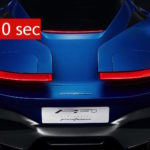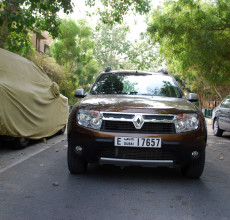The first time the Renault Duster surprised me was from atop a billboard on Dubai-Sharjah highway – by expressing condolence to those who had just bought an SUV recently! Standing out big and bold was the price of the Duster that must have hurt even more than the scornful words. Half a dozen years past, the Duster surprised me once again, as I traversed the charmingly challenging terrains of Jordan.
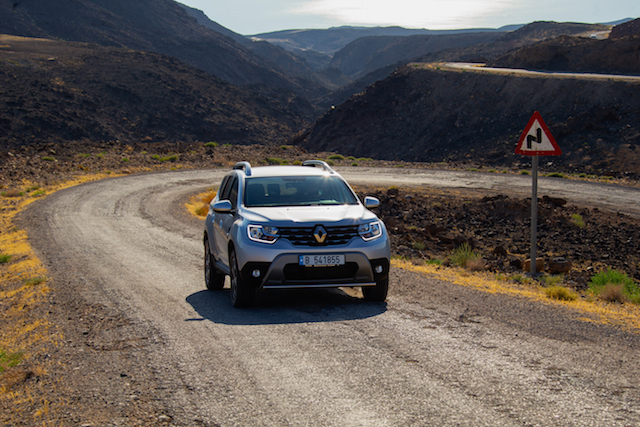
THE SPECS: 1.6L engine, CVT gearbox, Front wheel drive, 115 hp, 152 Nm torque / 2.0L engine, 4-speed automatic gearbox, Four Wheel Drive, 135 hp and 195 Nm torque, CO2 emissions: 193 for 2WD and 203 for 4WD
THE PERFORMANCE: 29.3° for the angle of approach, and 34.9° for the departure angle (4x 4) For the 4×2 it is 30º and 36º
THE DIMENSIONS: L x W x H: 4315 x 1822 x 1690 mm (with roof bars) Wheelbase: 2673mm, Boot space: 406L
THE HIGHLIGHTS: 4WD lock in 4×4 model, LED Daytime Running Lights, 2 front airbags, Emergency Brake Assist, ABS + EBD, Hill Start Assist in 2WD, Hill Descent Control in 4WD, Fog lamps
Available in Top Trim: Front side airbags, Remote engine start, 7” touch screen, Media Nav 3.0, 17” alloy wheels, Blind Spot Warning, Multiview Camera, Rear Parking Sensors (mid trim), 4x 4 monitor,
THE PRICE: Yet to be announced, Available from September
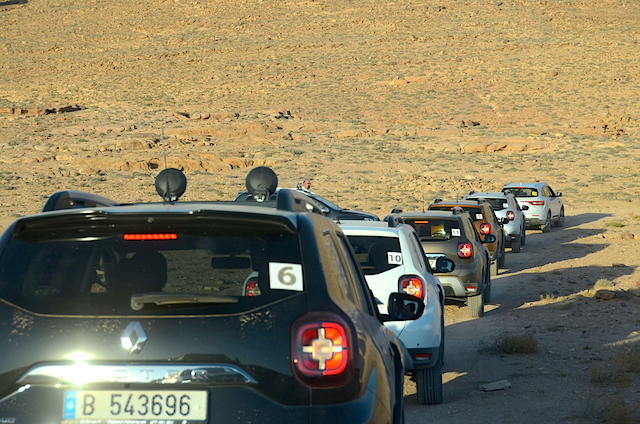
THE UPSIDE: New electric steering, Hill descent control, Comfortable ride, Off-roading skills, Less cabin noise
THE FLIPSIDE: Some cheap material amidst new softer interiors, Unsure handling at fast bends
Watch the Renault Duster Video Review now or at the end of this comprehensive review.
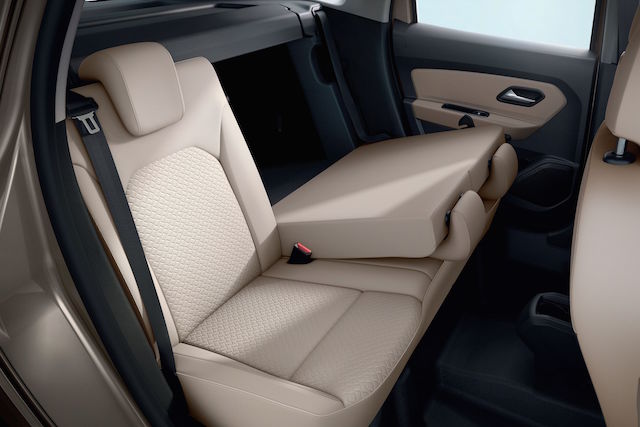
The Dead Sea Stroll
Early morning on the day of the drive, I was outside my hotel taking the Duster out for a quick warm-up. The photography team had an outgoing model, which made it easier to count the differences. The most striking was the rear lights that had given up the stacked-up style for a red box with a crosshair design within. LED daytime running lights and the larger chrome-finished grille were new too. Those and the accented skid plates at both ends made the Duster look more robust, the aluminium roof rails made it more practical and everything else helped to bring in a familiar feeling.
The overall size has remained the same for all practical purposes. The new Renault Duster is longer, and taller, by 5 mm and 2mm leaner while the wheelbase has remained the same. Oh, the boot has grown by 5 litres.

So, what is really new about the Duster?
Between now and the time the Duster was launched first, the automotive map has changed. Everybody is stacking the console with buttons or touch screens that add necessary convenience and unnecessary gadgets for raising perceived value. The Duster too has realised that this is the era of soft-roaders. Anyway, it doesn’t have much in common with the Defender besides the letters at both ends of their name! So, stepping into the Duster’s cabin that morning, it was obvious that they had made its cabin smarter, and softer.
In fact, the previous evening when I met Marwan Haidamous, Managing Director of Renault Middle East, I had only one question for him: “How. How on earth have you managed to compete with the value expectation you have set while offering a new cabin that isn’t as raw and basic as the Duster once was?”
Watch his response to this million-dollar question here.
The Duster is new where it really matters – in the inside. And I mean both the drive train and the interiors. It is still driven by the 1.6L and 2.0L naturally aspirated engines. The larger engine still has a 4-speed transmission but the smaller one gets a new CVT gearbox for fuel efficiency sake. But the test in Jordan was of the top trim, so as to get the feel of the Duster at its best – the 2.0L All Wheel Drive.
The cabin at once gives away the design priorities – materials are softer and more suitable to a contemporary cabin. However, some plastics and the headliner’s finish reveal some cost saving. I’m not complaining; they got to keep the price competitive. You don’t have to wrestle with knobs anymore to set temperatures – the air-conditioning is now automatic but still no rear vents. (But there is an armrest, yay!) The number of charging ports has gone up and these are only the start of what Renault describes as “Easy Life” features. The new Duster has a smart card for keyless access and remote engine start option for starting the car from outside by pressing a button on the key fob. The cabin now features a multimedia screen and even a blind spot warning feature. Easier life indeed!
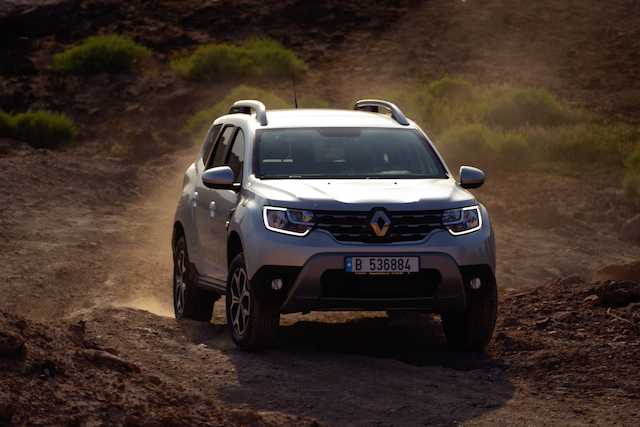
Winding mountain roads and road-less mountains
The two major changes about the Duster drive were obvious even before we started climbing the mountains. The drive felt smoother and not as raw and rugged as I remembered it. The new electric steering wheel adds plenty of ease and refinement to the drive.
The distance from Dead Sea to Petra was less than 140 km. There was no dearth of winding roads or steep slopes on the way. The stopovers were as interesting as the roads, especially the Dana biosphere reserve with a final descend along sheer drops lined with loose gravel.
The Duster climbed the hills with unflagging spirit, only occasionally seeming to pull too hard. The 135 hp of the engine and the 195 Nm of torque eventually overcame my skeptical acceleration. Even the expected drone of the 2.0L engine, as the convoy climbed hard, was not as grating as expected. Now, that could also be due to the fact that the Duster now has better glass insulation – amounting to 50% less noise inside the cabin. The suspensions seemed to make the ride more comfortable, or was it that the newly refined environment put it in the spotlight! This Duster was turning out to be too civilized for a Romanian box on wheels.
More civil doesn’t necessarily mean sharper. The Duster still had visible under steer at bends, and the chassis couldn’t be entirely trusted with handling corners and speed simultaneously. As it turns out, Duster seems to have an inbuilt quality that discourages speeding anywhere other than straights and plains.
On the other hand, what the Duster is able to do has been rendered safer by the addition of an ESP (Electronic Stability Programme) and Hill descent control, which helps the off-roading capabilities. This feature automatically applies brakes to control your speed while coming downhill. Reversing is now aided by a multi-view camera that shows either side of the car, for better judgment while parking or off-roading.
The division is clear. The 2.0L engine and 4WD go hand in hand while all the 1.6L versions are 2WD.
The former has a 4WD lock so that urban drives can still be performed in two-wheel mode, reducing fuel consumption. The off-roading capability has been authenticated by the addition of a 4×4 monitor that displays the degree of pitch and roll apart from a compass. A ground clearance of 205 mm and the skid plate in front gave me confidence to try some tricky slopes in the rocky Petra scenery. I was astonished at the way those suspensions absorbed the rough with the smooth! The Product Manager would tell me later in the day that, most things about the Duster’s drive have been kept unchanged in the refreshed model. Why fix something that isn’t broken?
WATCH VIDEO REVIEW: If you haven’t seen the review of the all-new Renault Duster filmed in Jordan, watch it now on One Minute Drive.
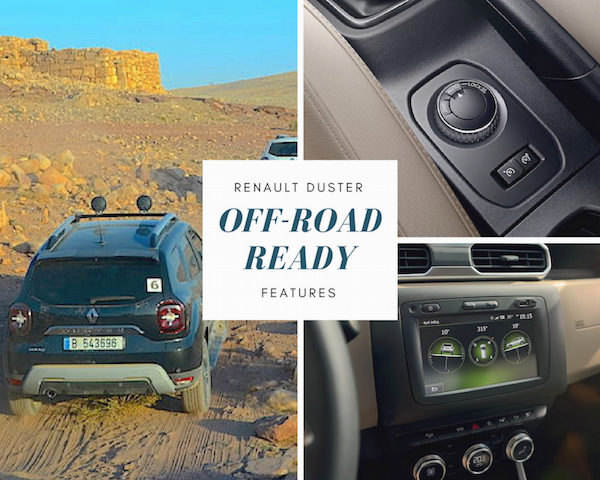
The essential Renault Duster 2018
The Kempinsky Ishtar where I stayed on the Dead Sea shores is a sprawling resort, and their spa offers a rejuvenating mud bath. But as a guest, I only had to walk down to the Dead Sea and cover myself in the mineral-rich mud, for a thanks and a tip. There are many who won’t spare a lot more for getting dirty. The all-new Duster is their luxury.


